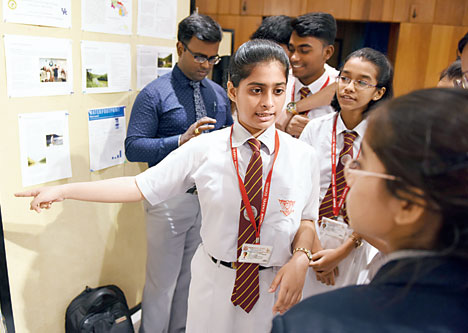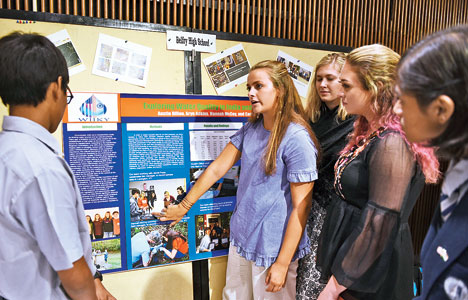Chowringhee:
A study on quality of water brought together schoolchildren from Calcutta and Kentucky.
Students of 10 schools from Calcutta, Durgapur, Kharagpur, Ranchi and Guwahati studied the quality of water from various sources and the Kentucky students assessed the impact of coal mines on water. They presented their projects at American Center on Friday.

The students of DAV Model School, Durgapur, were declared winner for their study on the water of Barakar river flowing through Jharkhand and Bengal. They shared the prize with the students of Belfry High School, Kentucky, who based their project on wells in East Kentucky.

Ten schools from eastern India and 12 from Kentucky tested samples from 121 water bodies, including rivers, wetlands, ditches, canals, wells and ponds in their own areas. The findings were shared with the community to discourage contamination of water.
The project titled Exploring Water Quality in Eastern India and Kentucky was launched by the US consulate general in Calcutta, in collaboration with University of Kentucky and Association of Social and Environmental Development,
“We hope the participants will take the lead in championing positive social change regarding water quality and conservation,” said Jamie Dragon, director, American Center.
The students of Belfry High School investigated water in 10 wells near coal mines.
“We will present a proposal to the Environmental Protection Agency in the US because well water is not regulated,” said Haridas Chandran, physics teacher at Belfry.
The students of DAV Model School, Durgapur, checked the pH level of Barakar river water and its residual chlorine content. One of the findings was that storing the water for long is not recommended because the absence of residual chlorine can trigger a significant growth of microbes.
“We carried out some tests in the school laboratory and the rest on river banks,” said Soumit Das, Class XII.
Garden High School worked on wetlands and Sri Sri Academy on water quality of Hooghly.
Carol Hanley, who guided the students in India and Kentucky, said they had to choose a waterbody that had both cultural and scientific significance.
“We call this community- based science so that science becomes real,” said Hanley, the director, College of Architecture, Food and Environment, University of Kentucky.
source: http://www.telegraphindia.com / The Telegraph,Calcutta,India / Home> Calcutta / by A Staff Reporter / June 23rd, 2018